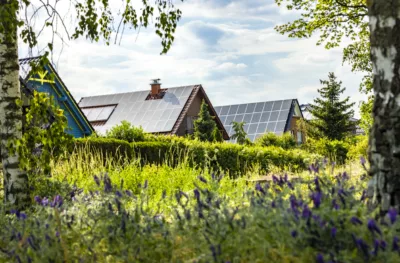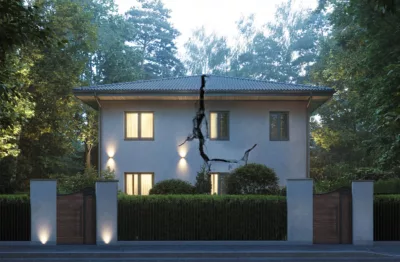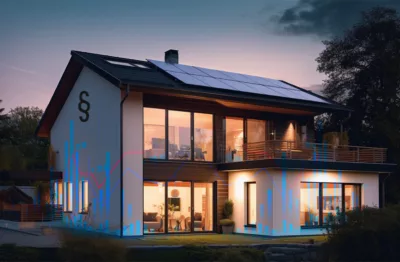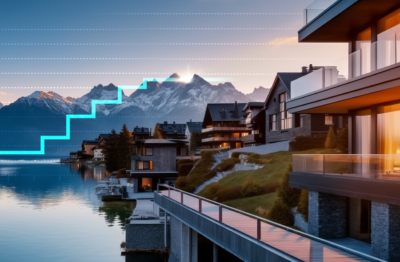Anyone buying a listed building in Switzerland often has concerns about the conversion. However, it is generally quite possible to convert protected houses. It is important to involve monument conservation at an early stage and to communicate well. If this is successful, attractive subsidies are available.
Table of contents
ToggleHere you can read about when a building is actually a listed building and how to find out more. We also look at what you need to bear in mind when renovating listed properties, how you can obtain financial support for the conversion and what exactly you are actually allowed to renovate. This will give you a good overview of your rights and obligations.
When is a house a listed building?
Monument protection is regulated differently in each canton in Switzerland. In the canton of Bern, for example, all the important requirements are set out in the Monument Preservation Act and the building legislation.
The general definition of listed buildings states that they “should be protected or preserved because of their special cultural, historical or aesthetic value”.
Listed properties in Switzerland are usually divided into these three categories depending on their worthiness of protection:
- Properties worthy of preservation or protection: If properties are at least 30 years old, they can be registered in the building inventory of the respective canton. You need a good reason for this. Changes to the property must be agreed with the municipality.
- Cantonal objects (K objects): K-objects are buildings worthy of preservation that are located within the perimeters of protected sites. Most of the buildings classified as worthy of protection are also K-objects. The preservation of historical monuments must be included in every building project.
- Listed properties: Properties in this category are formally listed, which is also entered in the land register. For changes to the property, it is necessary to work with the monument preservation authorities.
How do I find out whether a building is a listed building?
Before extending or converting a building, it is important to find out from the local authority about regulations and any heritage protection requirements. This makes sense even before you buy a property. The employees of the municipality can often provide a lot of helpful information for the planned construction project.
A look at the land register also shows whether the property is a listed building. K properties are also entered here. There are also indications as to whether the property is worth protecting and which parts of the building require special care.
If the property in question is part of the inventory of properties worthy of protection or preservation, it is important to take this into account in all renovation and conversion work. The monument preservation authority is responsible for ensuring coordination with the building owner and the municipal council.
By the way: monument preservation always serves the common good. Beautiful old properties in particular never belong to one person alone, but bring with them many responsibilities and duties due to their cultural value. These go beyond private interests – take this into account when considering whether you want to invest in a listed property.
What needs to be considered for listed properties?
The key to the successful conversion of listed properties is to involve heritage conservation experts in good time. You are legally obliged to prepare a technical report on the project. The actual building permit is then issued by the municipality or the regional governor.
Cooperation with the monument preservation authorities is not a 100% guarantee that the building project will be approved. But in over 99% of cases, the collaboration helps to complete the construction project without any problems.
Many conversion measures on protected properties relate to ecology: they are intended to reduce energy consumption and increase energy efficiency. This is also possible in listed buildings. For example, it is conceivable to install solar cells on the roof.
The insulation of old, protected properties is a particularly important issue for many building owners. This project often proves to be complicated, but here too, monument preservation can help. There are also more and more experts who specialize in energy efficiency in listed properties.
It is particularly important to follow the correct sequence when planning a building project on a listed property. The following points should be considered:
- Early contact with experts in monument preservation
- Joint preparation of the planning application
- Preparation of a technical report by the monument preservation department
- Building permit is issued by the municipality or government governor
- Only then can the construction work begin
How do I receive financial support?
Another advantage of involving the conservation authorities in the renovation work at an early stage is the financial support. In this case, value-preserving work is eligible for contributions. Value-enhancing measures, on the other hand, do not receive any financial support.
Building owners have no fundamental entitlement to support. The specialist unit decides in each individual case whether this is appropriate or not. This depends, among other things, on the site, the building and the planned measures. Based on these factors, the monument preservation authority decides what percentage of the value-preserving costs it will cover.
Example: In the case of eligible costs of CHF 100,000, monument preservation usually covers costs of CHF 20,000 to CHF 40,000. In some cases, it even covers all costs.
As soon as the subsidy exceeds the amount of CHF 5,000, the property must be formally placed under protection. This includes a contract and an entry in the land register.
Sometimes it makes sense to apply for the property to be placed under protection before starting construction work. This intermediate step helps to finance the conversion work on the building as soon as it is protected. Here too, monument preservation is the first point of contact.
What am I allowed to renovate and what not?
As is always the case in construction, building physics and statics set some immovable limits when renovating protected buildings. Technically impossible projects cannot be implemented under any circumstances. Apart from that, however, there are many opportunities to renovate a protected building.
The following works have a good chance of being approved:
- Ecological refurbishment
- Measures for greater energy efficiency
- Inscriptions
- Renovation of historic parts of the property
- Accessibility measures
However, a mixture of different styles is not desirable. Listed buildings should retain their exterior appearance. In some cases, compromises can be found for the interior, but changes to the architectural style and the façade are often difficult to approve.
Ideally, the original building materials should be used in the construction project. If this is successful, generous financial subsidies can be expected. In the case of extensions, it must be clearly marked which part of the building is old and which is new. This preserves the identity of the property.
Windows are a frequent point of contention when converting listed buildings. This is because they add to the charm of historic buildings, but also need to be replaced regularly due to signs of wear or insulation requirements. Here, too, the preservation order requires that the original style remains the same. In addition, the original building material must be used.
The chances of plastic windows being approved are therefore slim. Multiple glazing is conceivable. New windows in the form of skylights, on the other hand, are usually rejected because they represent a major intervention in the appearance of a protected building.
This shows that despite the willingness of the monument conservation authorities to engage in discussions, there are also limits. As a result, the owners of historic buildings sometimes have to put their conversion and extension plans on hold. But you also live in an important architectural heritage in particularly beautiful surroundings.
Conclusion: Working closely with the heritage conservation authorities
Monument protection in Switzerland is an important and sometimes controversial topic. The local authority responsible decides whether conversions and extensions are permitted despite the listed building status. The recommendation report of the monument preservation authorities is groundbreaking in this respect.
If you want to build with listed buildings, you should take advantage of all available support. Above all, this includes close cooperation with the local authority and monument preservation authorities. Financial support is also available. Work may only begin once the building project has been approved.
Would you like to be kept up to date with our blog articles? Then sign up here for the Properti newsletter!
Subscribe to our newsletter now
All data are without guarantee. The information on these Internet pages has been carefully researched. Nevertheless, no liability can be assumed for the accuracy of the information provided.












